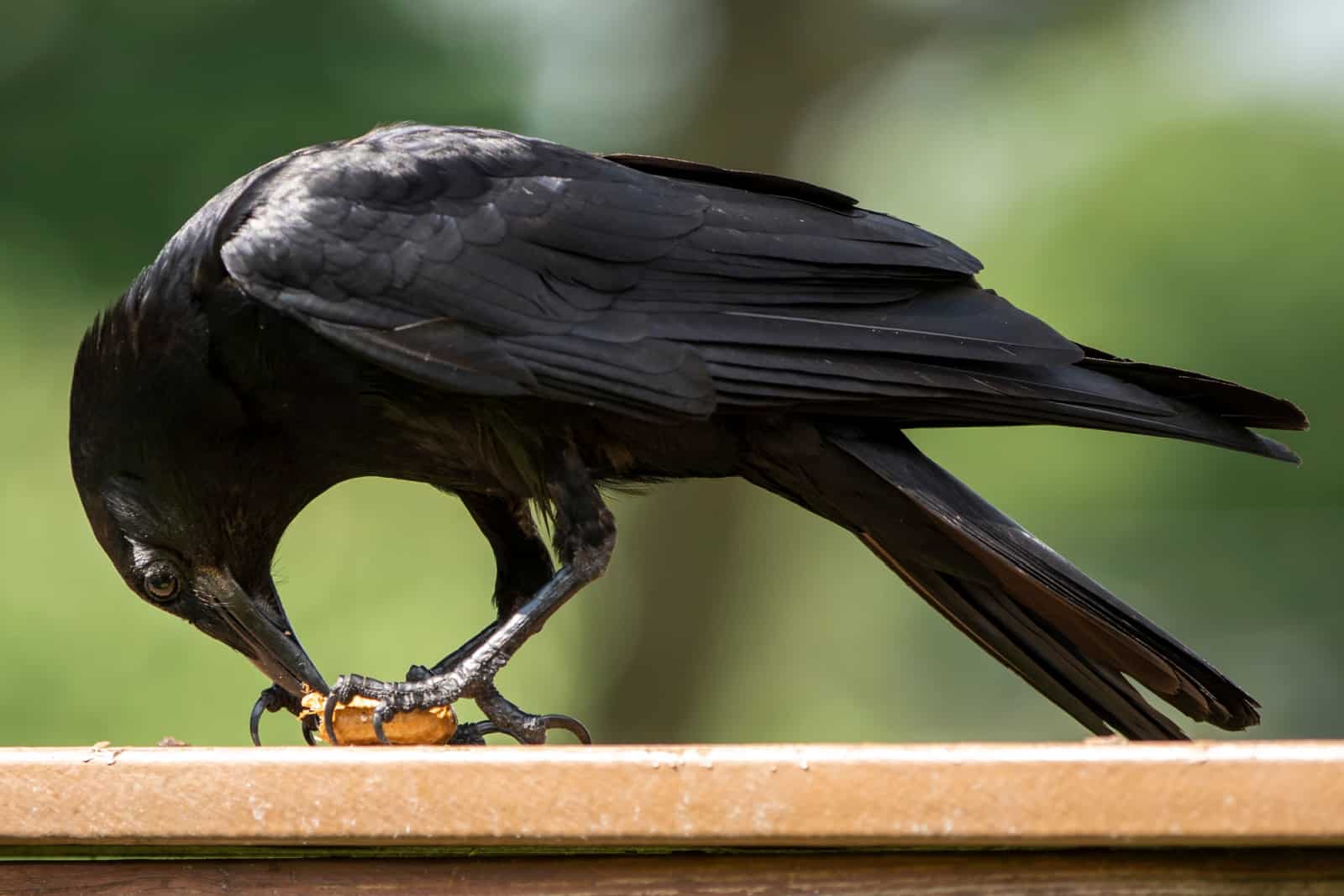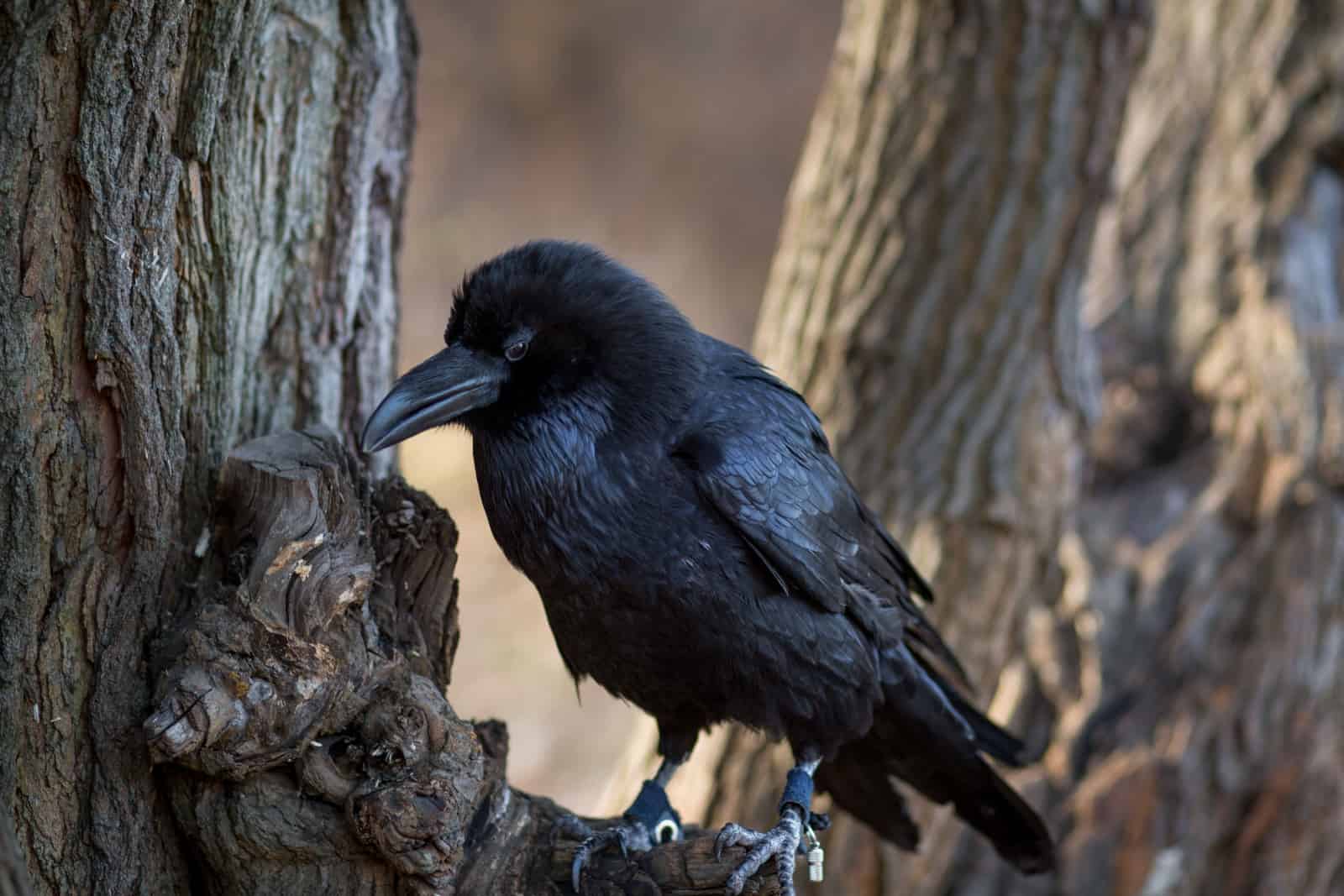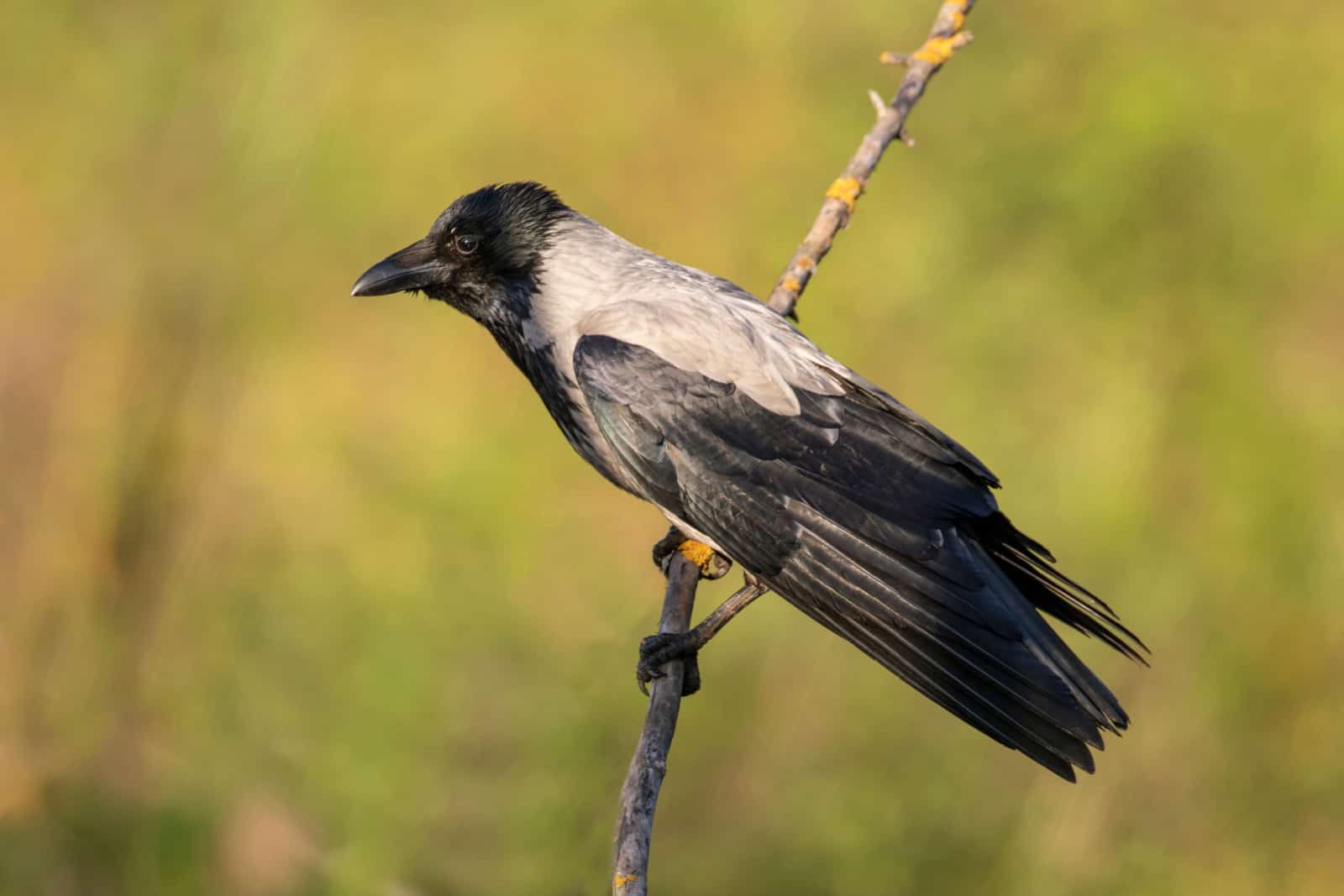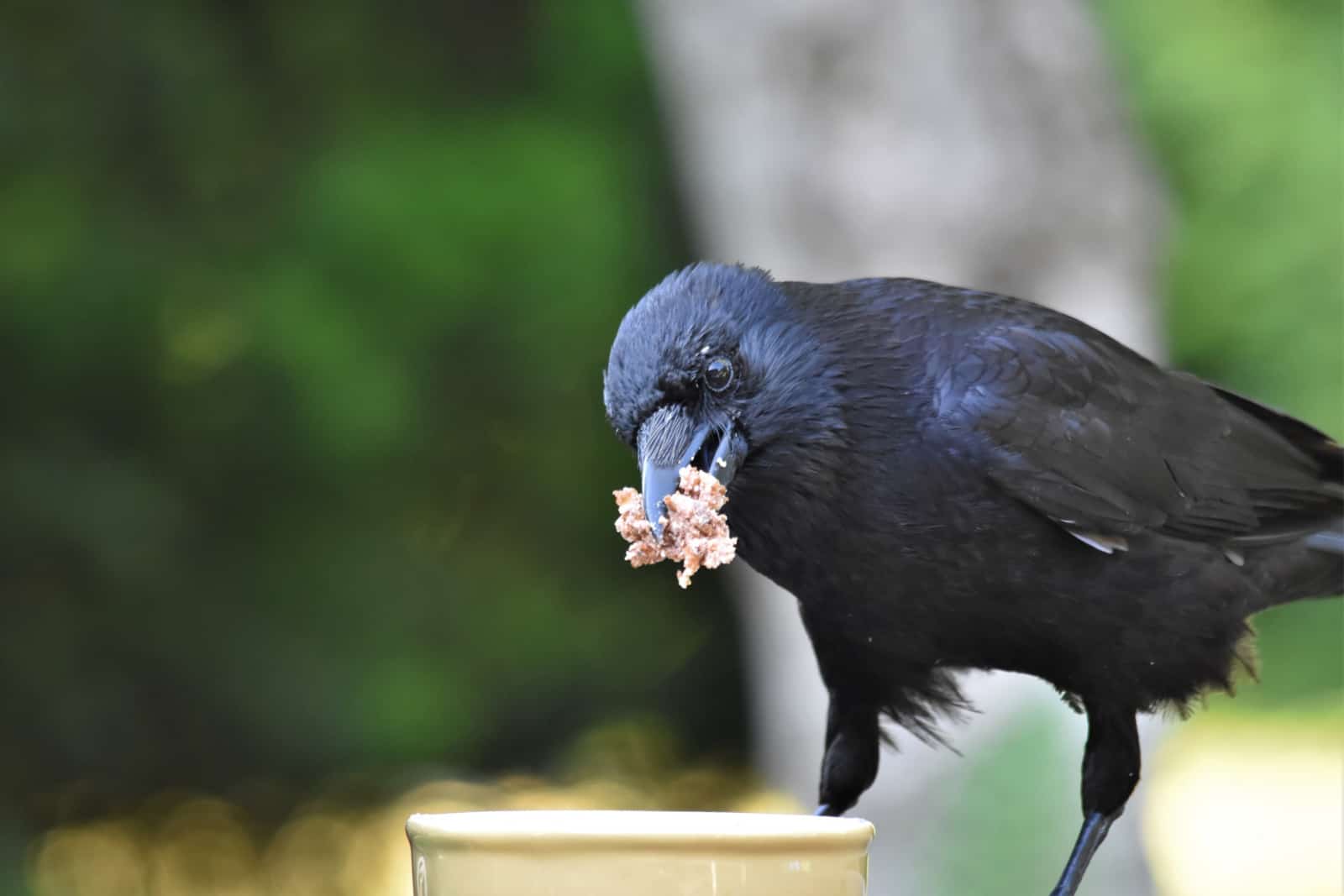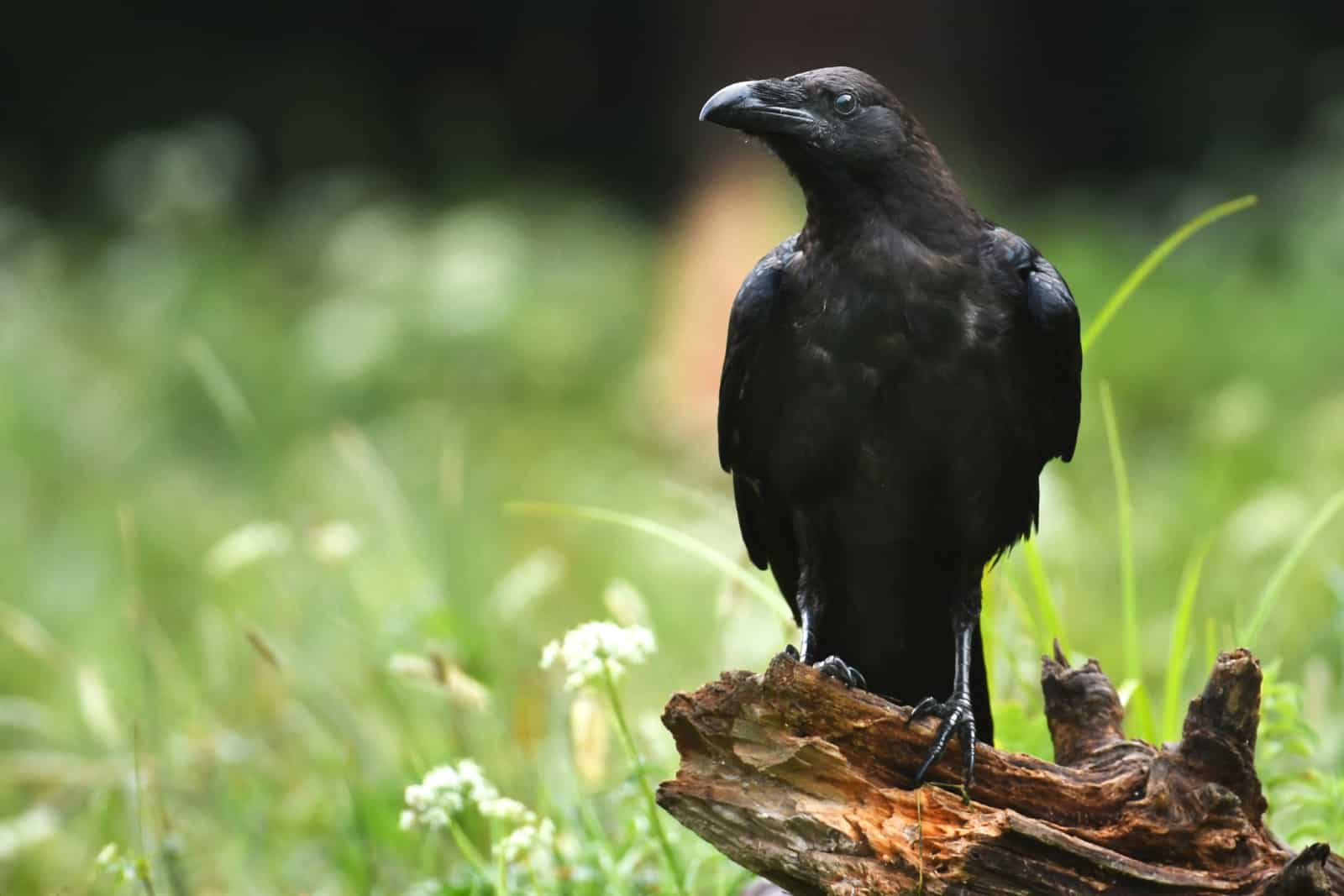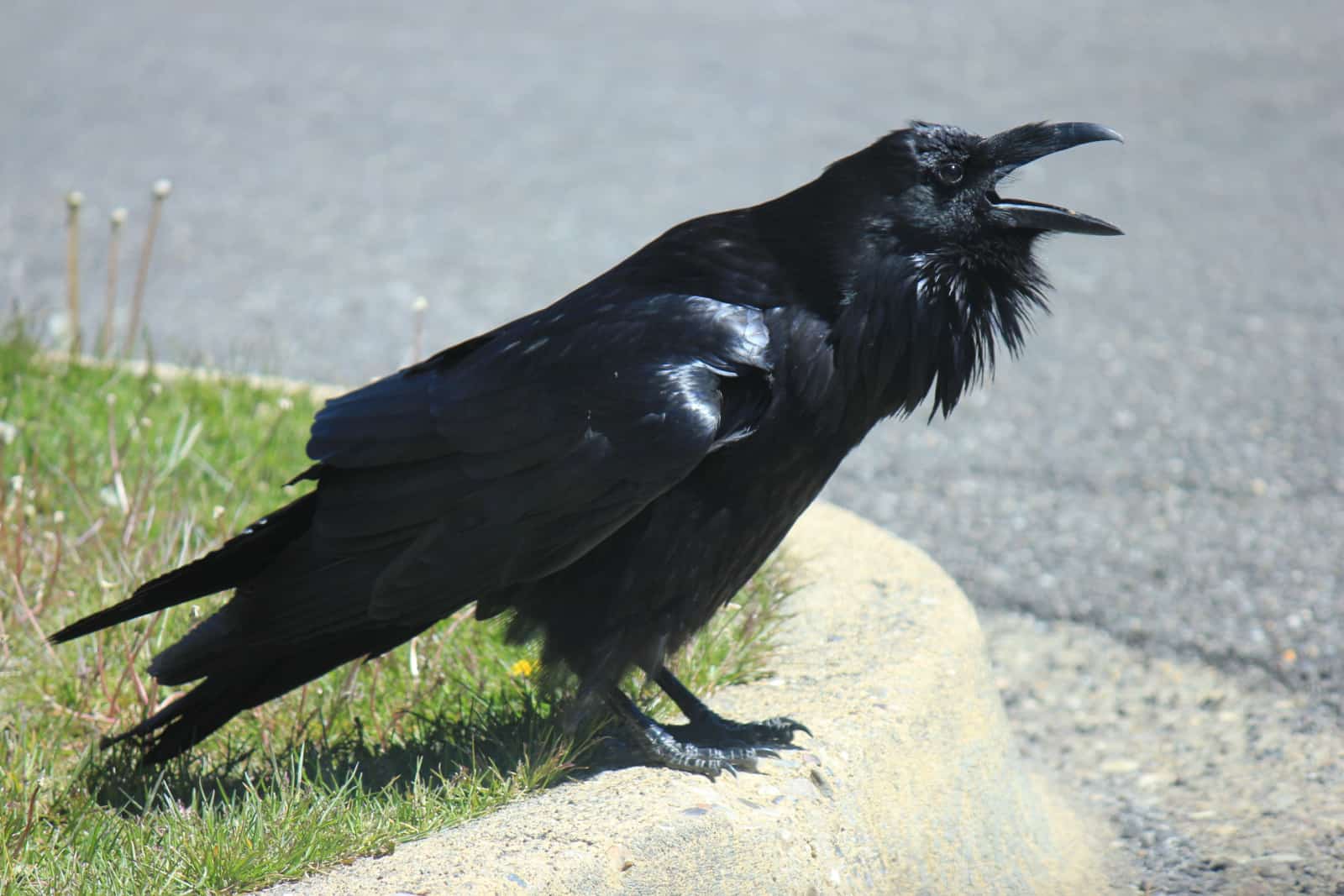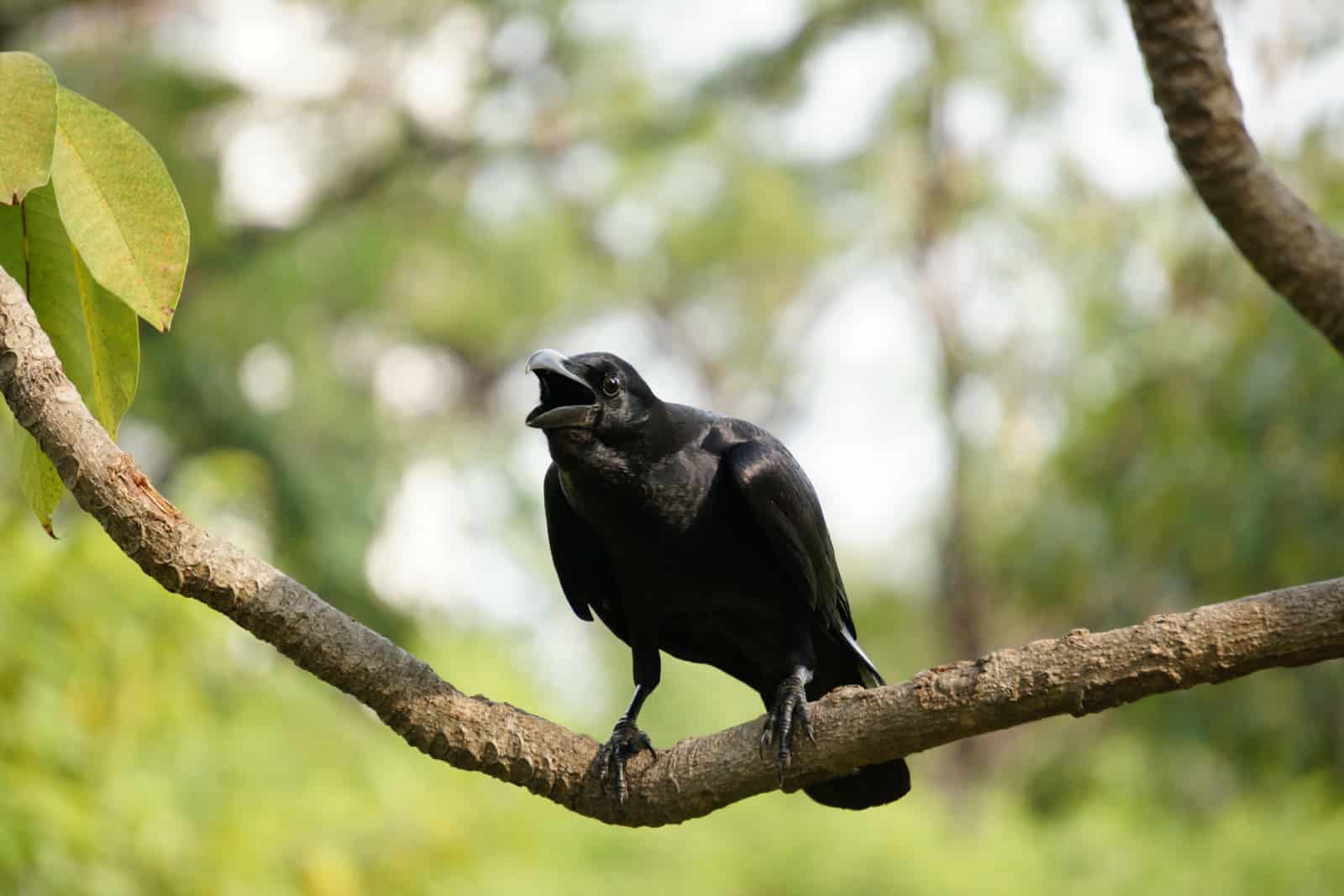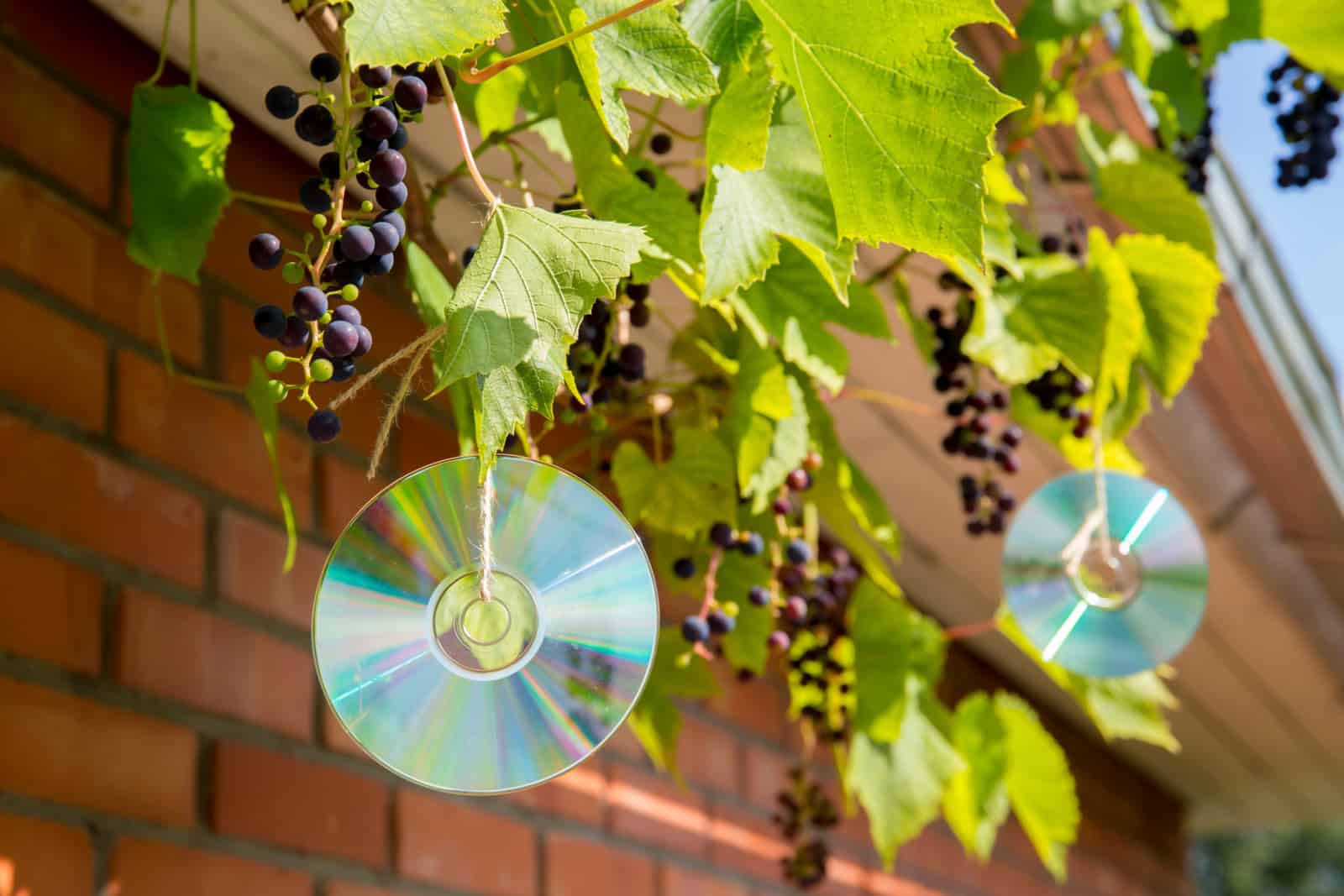I know what you’re thinking. Why on earth would anyone want crows in their backyard? But, hear me out!
They have a fascinating intelligence and are actually beneficial to your garden’s ecosystem.
And the best part about crows is that they’re fairly easy to attract. Provide them with food and shelter, and they’ll flock to your yard like crazy.
Here are some tips!
Why Should You Attract Crows?
According to Scientific American, crows are some of the smartest animals and have developed a semblance of language.
But if their intelligence isn’t enough for you to attract them, then their pest control abilities surely will.
A single crow family can consume approximately 40,000 armyworms, grubs, caterpillars, and other pests per season.
They also disperse seeds and eat carrion, reducing the spread of diseases, improving landscape appearance, and benefitting ecosystems as a whole. (1)
Crows may even recognize human faces and distinguish between good and bad people. (2)
That means they’ll hold a grudge against you or reward you with tiny gifts, such as coins, cans, buttons, or rocks.
How To Invite Them Over
You can attract crows similarly as you’d attract cardinals; make them feel safe, give them a place to eat and take a bath, etc.
Using crow decoys is another thing that works, but food, water, and shelter are necessary if you want them to stick around.
Here are some more ideas!
Make Them Feel Safe
The first step to turning your garden into a crow gathering place is by creating an environment where they feel safe.
That means no loud noises, such as door slamming, wind chimes, bells, squeaky and noisy gates, etc.
Also, you should keep your pets indoors even if you don’t think they would hurt your winged buddies. That’s because these corvids don’t know that and see cats and dogs as natural enemies.
Remove all the things that could scare them, starting with scarecrows. Shiny objects and owl statues are also a big no-no.
Lastly, give crows some time and space to make friends with you.
Pretend Other Crows Live There
Crows and other corvids are social animals that live in communities. (3)
Therefore, you might want to fake that other crows live there by placing four or more crow decoys around your backyard. This will make your place look more inviting and the crows will be more willing to check it out.
Just don’t get ones that look dead because that could scare these birds.
Move the decoys to engage the corvids, but only do so at night. As I mentioned, crows are rather intelligent animals and will see through the decoys if you make it too easy.
You can use audio recordings of crows or crow calls in addition to decoys. Turn them on early in the morning and in the afternoon since these are the times when these feathered creatures are most active.
Give Them A Place To Relax
Crows are social creatures that hang out in their roosting areas. That’s why you should include one in your backyard if you want more of these corvids there.
They particularly like a tall group of trees near a body of water, but will appreciate fence posts, poles with crossbars, etc.
Incorporate A Birdbath
All birds love birdbaths, and the same goes for crows. It provides them with a place to drink, bathe, and cool off on hot summer days.
They will even soak their food before feeding their young ones or themselves. (4)
When getting a birdbath for crows, look for a ground variety since it makes these birds feel comfortable. However, they will adapt to just about anything, so a regular birdbath will work, too.
Just look for a larger or deeper one because it can hold more water. Remember, crows aren’t that small.
You can even create a small space for them where they can relax next to the birdbath to make them as comfortable as possible.
Offer Them Food
Of course, no bird will visit your yard if you don’t offer it something to eat. That’s why crow food is a must.
But what do these birds eat? I don’t know about you, but I’ve never seen anything labeled “crow food” in a store.
These corvids are omnivorous and will eat pretty much anything, from fruits and seeds to insects, reptiles, fish, mollusks, birds’ eggs and adult birds, carrion, and even human food. (5)
And if you want to attract them, you can feed them dry pet food or unshelled peanuts since these are crows’ favorite. (6)
Furthermore, you should feed your crows everyday at the same time to establish a pattern and routine they can follow. And since these winged creatures are most active in the early morning and afternoon, those should be the feeding times.
Invest in a crow feeder and put the food there or at least in the same place every day so that your feathered buddies can find it.
Setting up a compost pile nearby is another great option. It is a perfect buffet for crows where they can munch on food scraps and insects lurking around.
You can even feed these flying scavengers with junk food as it has no negative effects on crow health. (7)
However, it might attract some other creatures, such as rats, so I’d stick to alternative food sources.
Place Nesting Materials Nearby
Birds need their nests, crows included. These corvids like to nest in tall trees with well concealed branches.
They will build their nests in head-spinning skyscrapers or be within reach as long as they can go unseen.
Therefore, if you want them in your backyard, avoid felling tall trees or cutting shrubs. You can take it one step further and plant conifers, just bear in mind that it may take decades for them to reach their full size.
Another thing you can do to encourage crows to nest in your garden is make nesting materials available. They use mid-sized twigs, pine needles, soft bark, animal hairs, and grass.
Therefore, leave strings, pet fur, and other materials outside where they can easily find and use it to build their tiny houses.
Will These Tricks Attract Ravens?
When you look at ravens and crows, you’ll hardly notice any physical differences. And even though they do differ, they have the same dietary requirements. Ravens and crows are both corvids and would come to your crow feeder if they’re in the area.
They will also be attracted to other things you put in your yard as a means of attracting crows. They love birdbaths, a good nesting area, and the materials you provide.
And if you’re not sure whether you have a raven or a crow in your backyard, there are some things that can help you tell them apart.
Crows have a clean black shade, while ravens have a blue, green, or purple sheen. When in flight, crows have a triangular tail, and ravens a diamond-shaped one.
But the key difference between these two birds is their size. Ravens are twice as large as crows, almost as big as a hawk. So if you see a bird in your area that’s way too big to be a crow, it’s probably a raven.
Do Crows Eat Other Birds?
Crows can definitely eat other birds, attacking them so quickly and ferociously that you wouldn’t be able to process it in time to stop the attack.
They will eat eggs and nestlings if they can get their hands on them, but so will other animals if they get the chance.
In fact, crows will eat much more earthworms than bird eggs.
Therefore, these birds won’t harm your cardinals, goldfinches, and other songbirds that much. Actually, if you remove crows from the area where these birds live, other animals will come and kill songbirds. (8)
This study also showed that other birds benefited from corvids in 6% of cases. Also, crows don’t affect other birds that much, so you won’t have to choose between corvids and songbirds any time soon.
Note: Birds know that they’re vulnerable when young and are used to predators, which is why they lay so many eggs.
Disadvantages Of Attracting Crows
Even though crows won’t eradicate songbirds, that doesn’t mean there are no disadvantages from having them around.
• Crows get up way too early, make too much noise, and wake you up.
• They will poop all over the place, including roofs, pathways, and vehicles.
• Crows will attack you if you get too close to their nests or they think you might harm their little ones.
• These birds are highly intelligent, can communicate, and are great at remembering human faces. They also hold grudges, so if you wrong them, you can expect them and their offspring to attack you for years to come.
• Crows will eat a part of your crop, but will devour much more insects, which is why many gardeners can tolerate a small sacrifice.
• Your neighbors may not like them. They’re loud and hide their food all over the place, including their yards. They leave peanut shells behind them, so imagine how your neighbor with a peanut allergy may feel.
• Crows can also tear up your lawn in search of grubs of European chafer beetles. In this case, you should focus on dealing with the infestation, and your crow problem would solve itself. (9)
How To Get Rid Of Crows
If you accidentally invited crows to your backyard or you’ve simply had an issue with them since day 1, here are some things you can do to get rid of them.
1. Provide them with a suitable nesting area close by. Therefore, all these tricks from above can help you lure crows to a different location and away from your home. Just remember to act quickly. It will be nearly impossible to remove these corvids when they build their nests and settle.
2. Get rid of nearby bird feeders and other food sources, such as a composting pile. (You can replace it with a composting bin or cover it.)
3. Use trash cans with heavy lids so that the crows cannot get to your kitchen scraps.
4. Place wind chimes or play firework sounds to scare them with loud noises. You can be creative when it comes to this.
5. Place shiny objects, such as CDs, and scarecrows in your yard. Also, you can protect your veggies with anti-bird nets. This way, crows may eat pests and not your crop.
Pro tip: Crows and other pests are afraid of owls, so placing statues of them can decorate your landscape and keep these birds away. However, crows learn fast and won’t be fooled for long.
References:
1. What to Do about Crows? (n.d.). The Humane Society of the United States.
2. Hamilton, G. (n.d.). Crows Can Distinguish Faces In a Crowd. The National Wildlife Federation.
3. Decker, J. (2015). Crows and Social Behavior. California Academy of Sciences.
4. Water in Birds’ Lives (2017). Black Hills Audubon Society.
5. Lowe, J. (2021). Something to Crow About: The Amazing Diet And Eating Habits of American Crows. American Bird Conservancy.
6. FAQs About Crows. Corvid Research.
7. Dumpster Diving Is Giving Crows Higher Cholesterol—But Does It Matter? (2019). Corvid Research.
8. Do Crows Reduce Other Songbirds? (2014). Corvid Research.9. Van Gaalen, K. (2016). Why Are Crows Ruining My Lawn! (a.k.a. Living with European Chafer Beetle in Vancouver). The University of British Columbia, UBC Botanical Garden.

